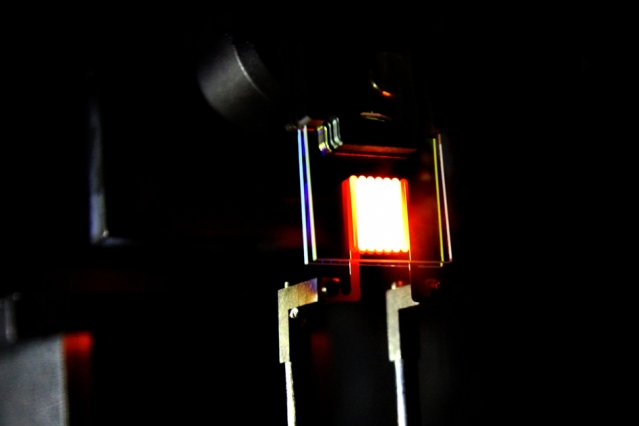
MIT figures out a way to keep the incandescent light bulb alive
While Thomas Edison’s light bulb was a breakthrough of its time, and for years following, recently many countries have banned the use of the technology — phasing it out and replacing it with more efficient lighting methods like compact fluorescent bulbs (CFLs) and newer light-emitting diode bulbs (LEDs).
However, a team of researchers from the Massachusetts Institute of Technology and Purdue University may have discovered a way to keep the incandescent light bulb around.

(Image Courtesy of the researchers via MIT)
Incandescent bulbs work by heating a thin tungsten wire to temperatures of around 2,700 degrees Celsius and have always suffered from the problem of wasted heat — more than 95 % of the energy is wasted as heat, making them an inefficient lighting method. That’s why country after country has banned or is phasing out the inefficient technology. Now, researchers at MIT and Purdue University may have found a way to change all that.
How they did it
The researchers used a two-stage process to reinvent the incandescent light bulb. The first stage involved a conventional heated metal filament, but instead of allowing the waste heat to dissipate in the form of infrared radiation, the researchers created structures surrounding the filament to capture this radiation and reflect it back to the filament to be re-absorbed and re-emitted as visible light. What they used to create the structures was a form of photonic crystal made from Earth elements.
By finding a way to have the light re-absorbed and re-emitted as visible light, the researchers made a big impact in the efficiency the bulb’s electricity to light conversion.
One quantity that characterizes a lighting source is the so-called luminous efficiency, which takes into account the response of the human eye. Whereas the luminous efficiency of conventional incandescent lights is between 2 and 3 percent, that of fluorescents (including CFLs) is between 7 and 15 percent, and that of most compact LEDs between 5 and 15 percent, the new two-stage incandescents could reach efficiencies as high as 40 percent, the team says.
The first prototype developed by the team achieved an increase in the incandescent light’s luminous efficiency to 6.6% (response of the human eye), typically between 2% to 3%. Although that does not quite match the efficiency levels of CFLs ad LEDs (between 7% and 15%), the team predicts it can eventually reach an efficiency level as high as 40%.
The team’s new approach is referred to as “light recycling” and plays a major role in achieving control of thermal emissions. The team is still determining what kind of applications they can apply the new discovery to.
Story via MIT.

Comments are closed, but trackbacks and pingbacks are open.